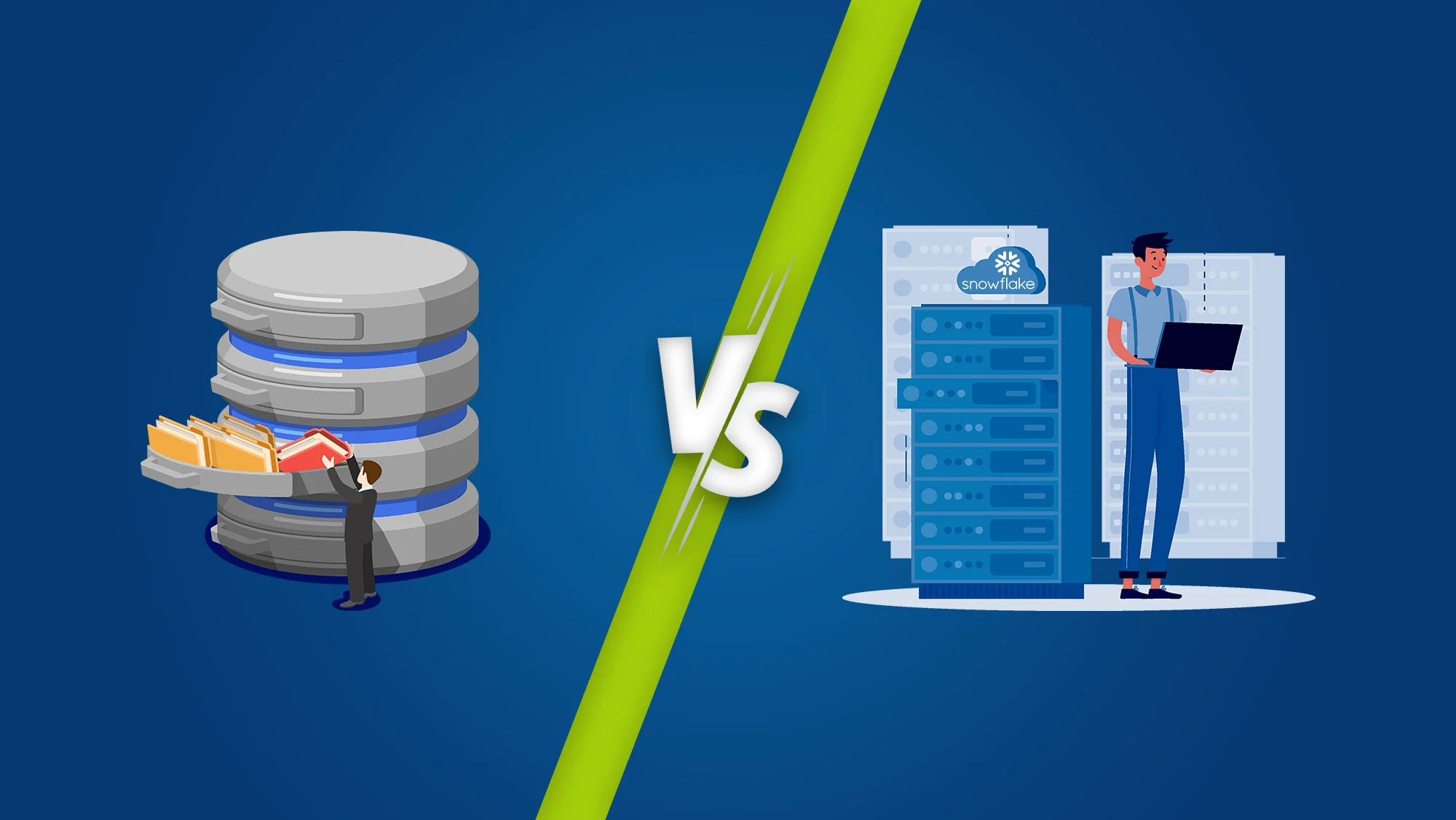

Businesses today are only as powerful as their data and how well they manage it. With the rise of modern data management solutions, companies are breaking free from the constraints of traditional systems and unlocking new opportunities for growth through advanced data intelligence and analytics. While traditional data warehouses served as the foundation for analytics for decades, cloud-native platforms like Snowflake are leading a bold transformation in data warehousing services, offering unrivaled scalability, cost savings, and flexibility.
In this blog, we dive into the key advantages of Snowflake over traditional data warehouses, uncovering why it’s becoming the go-to choice for businesses seeking cutting-edge data management consulting and streamlined business data management for SMEs.
Unlike traditional data warehouses, Snowflake is a fully cloud-based platform built for today’s dynamic business needs. Its architecture allows for near-infinite scalability, separation of compute and storage, and advanced data-sharing capabilities. This flexibility ensures that businesses—whether large enterprises or SMEs—can handle their growing data demands without the bottlenecks often associated with on-premises systems.
Traditional data warehouses, while reliable, are limited by their hardware infrastructure. Scaling them requires significant investments in hardware, time, and manpower. By contrast, Snowflake enables effortless scalability, making it an ideal solution for business data management for SMEs looking to expand operations without high upfront costs.
Snowflake offers dynamic scalability that traditional warehouses cannot match. Its elastic compute resources allow businesses to handle fluctuating workloads seamlessly. For example, during peak demand periods, Snowflake can allocate more resources without downtime.
Traditional data warehouses, on the other hand, rely on fixed hardware, making scaling time-consuming and expensive. This limitation can hinder organizations that need to rapidly process growing datasets for data intelligence and analytics.
Additionally, Snowflake separates compute and storage, allowing businesses to scale each independently based on need. This feature is critical for organizations that require highly optimized data management solutions.
Snowflake operates on a pay-as-you-go pricing model, allowing organizations to pay only for the resources they use. Additionally, it separates storage and compute, enabling businesses to optimize costs based on their specific needs.
Traditional warehouses often require substantial upfront investments in hardware, software, and ongoing maintenance. This can strain budgets, particularly for small to medium enterprises seeking business data management for SMEs that don't break the bank.
One of Snowflake’s standout features is its ability to handle structured and semi-structured data (e.g., JSON, Avro, Parquet) seamlessly. Businesses can load and query diverse data formats without the need for complex transformations.
In contrast, traditional data warehouses struggle with semi-structured data, requiring additional ETL (Extract, Transform, Load) processes that add complexity and delay insights. This capability makes Snowflake a superior choice for businesses focusing on modern data management consulting.
Snowflake’s multi-cluster, shared-data architecture eliminates performance bottlenecks, even during high-concurrency workloads. This ensures that multiple teams can query data simultaneously without impacting speed.
Traditional data warehouses often experience delays when handling concurrent users, leading to inefficiencies in workflows. Snowflake’s ability to maintain performance under pressure is a game-changer for organizations leveraging data warehousing services.
Snowflake simplifies secure data sharing between organizations without requiring complex data transfers. Its architecture enables real-time data collaboration, enhancing decision-making and streamlining processes.
Traditional warehouses lack this level of seamless data-sharing functionality, making collaboration between departments or external stakeholders more challenging. Businesses aiming to enhance their data management solutions find Snowflake to be a clear winner.
These figures demonstrate the impact of Snowflake in helping businesses enhance their data intelligence and analytics capabilities.
Snowflake’s innovative features empower businesses to unlock the full potential of their data. By seamlessly integrating structured and semi-structured data, Snowflake enhances data intelligence and analytics, enabling organizations to extract actionable insights faster.
For SMEs, Snowflake’s support for business data management means they can make smarter decisions without requiring large IT teams or excessive infrastructure investments. With its robust data-sharing capabilities, Snowflake enables cross-functional collaboration, ensuring all teams access the same up-to-date information.
Additionally, the flexibility of Snowflake allows businesses to experiment with advanced analytics techniques, such as predictive modeling, machine learning, and customer segmentation. These capabilities provide a competitive edge in industries like e-commerce, finance, and healthcare, where data-driven decisions are paramount.
While Snowflake offers clear advantages, it’s important to evaluate how it aligns with your specific needs. For enterprises handling massive, dynamic datasets, Snowflake provides unparalleled scalability, performance, and flexibility.
However, businesses with smaller, static workloads may still find traditional warehouses sufficient for their data warehousing services. It’s all about finding the right solution for your data needs.
At Maukaa.io, we specialize in helping businesses transition to modern data management platforms like Snowflake, ensuring seamless scalability, enhanced data intelligence, and cost efficiency. Our tailored data management solutions empower organizations to unlock actionable insights, improve operational workflows, and future-proof their data strategies. Whether you're an SME or a large enterprise, Maukaa.io is your trusted partner in redefining how you manage and leverage your data.
Snowflake’s cloud-native architecture, combined with its cost-effectiveness, scalability, and advanced features, positions it as a powerful alternative for modern data management consulting.
For organizations striving to stay ahead in the competitive data landscape, adopting Snowflake means embracing a future-proof platform designed to support growth, innovation, and collaboration. Whether you’re a large enterprise or an SME, Snowflake provides the tools to optimize your data management solutions, improve data intelligence and analytics, and drive long-term success.